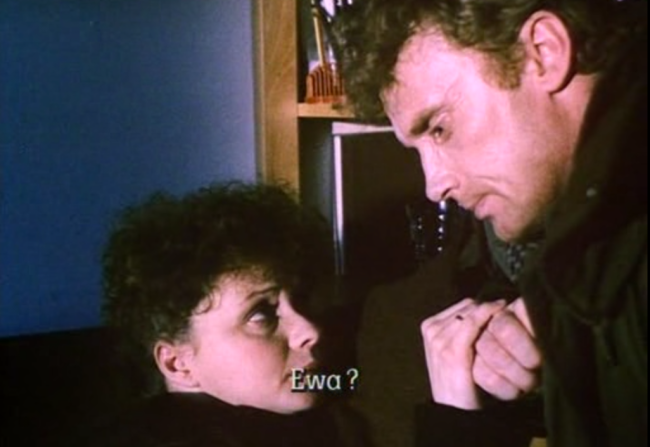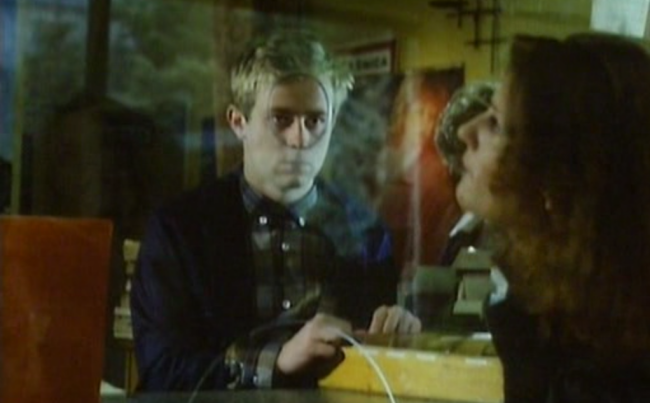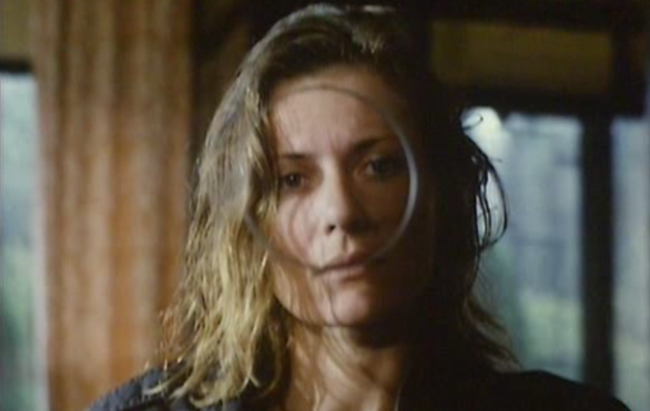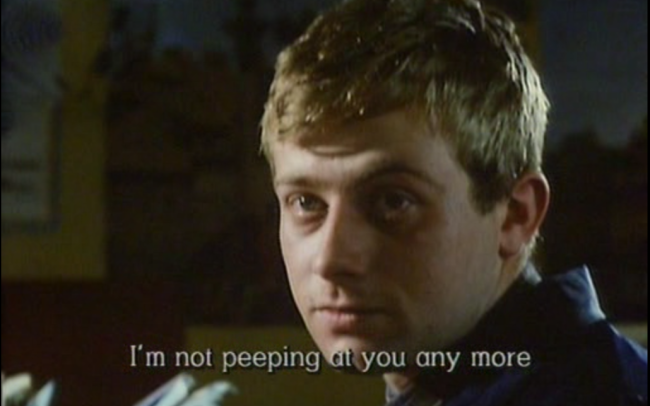βλέπομεν γὰρ ἄρτι δι’ ἐσόπτρου ἐν αἰνίγματι, τότε δὲ πρόσωπον πρὸς πρόσωπον.
ἄρτι γινώσκω ἐκ μέρους, τότε δὲ ἐπιγνώσομαι καθὼς καὶ ἐπεγνώσθην.
– ΠΡΟΣ ΚΟΡΙΝΘΙΟΥΣ Α΄ 13:12
For now we see in a mirror dimly, but then face to face; now I know in part, but then I will know fully just as I also have been fully known.
– 1 Corinthians 13:12 (NASB)
For the longest time I have preferred the English Standard Version as my go-to Bible translation, mostly because of the word usage and the general syntactic structure that seemed to “make sense” to me. But in this particular passage (which stands as one of my most favorite passages in all of writing), the New American Bible delivers, with the subtle usage of punctuation. Instead of “Now I know in part; then I shall know fully, even as I have been fully known,” we get in the NASB “now I know in part, but then I will know fully, as I also have been fully known.” The shift from the semicolon to the comma reminds me of the preference of Professor Ashford in Mike Nichols’ film Wit, where the comma signifies not a full stop, nor a separate thought apart from the first clause, but a transition – a mirror – between before and after, life and death. In the passage we see how “knowing” is not entirely separate from “knowing in part” and “knowing fully” because knowing is in itself made possible because “I also have been fully known.” The quick separation between partial and full knowing happens in an instant, like a face in the metro that evokes a happy memory. It is not some long intellectual process, but a happening, an event. This is further confirmed in the Greek, where ἐπιστήμη (epistemé) is no where to be found. Rather, we are told of knowing as a kind of γνωστικός (gnōstikos), a special (i.e., secret) kind of knowledge that is already “known” (γνωστός), suggesting an event or an encounter. This event is not some result of a skill (as is suggested by epistemé, not to be confused with the almost-similar meaning in the Greek word τέχνη) but rather is unexpected – as the philosopher Emmanuel Levinas likes to say, “of God who comes to mind.”
I think this subtle preference can be the key in understanding Krzysztof Kieślowski’s Dekalog, sześć. The film became some sort of an enigma to me when I first watched it. I then consulted some websites that offered interpretations of the film, and I came across The Film Sufi’s brilliant interpretation, which kind of set me to have my own reading of the film. Let me lay out some sort of structure to this post: first, I will discuss the cinematic techniques that Kieślowski employs that provides us a window into the psyche of the characters involved, along with the extant themes of the film; the second part will talk about these themes in detail (though not in the degree that other blogs have done, who in my opinion are brilliant, such as Senses of Cinema, and of course The Film Sufi); finally, we will look into its intimate connection with our short exegesis we have done above.
Kieślowski is quite known for employing colors to convey thoughts. One is reminded of the scene in Dekalog, trzy, where Ewa crashes Janusz’s car unto a Christmas tree in the climactic scene of the episode:
The colors do not only signal the dominant emotions in the scene – one of tension, anger, and resentment – but also signals the beginning of the high-point of the narrative: Ewa confesses in the station that she would have killed herself if Janusz left her in the middle of the night. In the penultimate scene we see Ewa flashing her headlights as goodbye to Janusz (it is interesting to note that Ew drives a red car, and Janusz a white one). In the final confrontation with the wife, we see again Kieślowski’s employment of light and color to signal a shift in the narrative:
The light that emanates from somewhere (the window, but in this scene it is suggested that one can only imply that it was the window – the frame is brilliant for suggesting that the light is there, while not showing the source of the light), reminding me of Caravaggio’s The Calling of Mathew. That is to say, Janusz “turns to the light” in confessing to his wife and telling her that he won’t be “going out again in the evenings” (notice that he never promises; he just tells he won’t), thus keeping the Sabbath Day – in this case, Christmas gains an all-new and deeper meaning – holy.
So we are to treat colors not only as an evocation of emotions, but also cinematic cues that signal a shift in the narrative. We also see this in sześć, during Magda’s confrontation to a bruised Tomek’s confession of his love to Magda outside 376:
The framing here is excellent: the window behind them is surrounded with red, with the light emanating from that very small space. Notice, also, that Tomek faces Magda when he says he loves her, and Magda looks on, away from Tomek’s face. The next scene shows Tomek partially illuminated by the light that emanates from the window. Notice that he wears blue (it is Tomek who wears the colorful clothes for much of the film, except for the date scene before the “events” in Magda’s apartment, where Tomek wears black and white) – this will be very important later on:
The partial illumination obscures the bruise on Tomek’s right eye, suggesting a kind of naïveté that is either childish (you do not know better) or childlike (I just know). The partial illumination should also tell us the conflict within Tomek as he professes that he wants “nothing” from Magda (this, again, will be important later on). The next scene has Tomek running around outside the apartment in happiness as per Magda’s acceptance of his invitation to have a date (where the ominous God-figure makes his first appearance – a person in white overalls carrying a white bag and a brown bag). It is interesting to note that in this scene only the uninjured face of Tomek is shown, suggesting the childlike/childish duality we have mentioned earlier.
Again, we have said that colors signal not just emotions but events. This scene prefigures their date, which climaxes in Magda’s attempt to get him in bed and Tomek’s subsequent suicide attempt (or was it?). We have mentioned that Tomek, for the first time in the film, wears contrasting colors: black and white. What does this tell us? – that perhaps, Tomek is running up to a crisis – krinein in Greek means decision – as to whether he truly loves Magda or not. The face-to-face encounter may be too much for Tomek to bear, and the moment of choice comes up to him. Magda, on the other hand, coerces Tomek to sensualities, going as far as to attempt to have him in bed, which results in Tomek’s very premature ejaculation. We learn that Magda is trying to “teach him a lesson” that there is nothing more to love than ejaculation (but is it just that?), and she succeeds, albeit to disastrous results.
Another technique that Kieślowski employs is the use of close-up shots that focus on the eyes. More than just an emphasis on emotiveness and sincerity, these shots are also meant to tell us that character development is not done or does not happen with oneself alone – it is always with another person, to whom the character beholds his or her eyes to. In short, Kieślowski wants to show us the relational aspect of being human, and in terms of character development, the roundness of characters can only be possible with other characters in the narrative (even the Dostoevsky’s underground man was at some point relational). It is thus not an accident that Kieślowski focuses on the only aspect of the human face that has sharply contrasting colors – the eyes (white, and non-white, and in the most common cases, black and white). What, then, does this tell us? – that it is in the face, particularly the eyes, that we can see Kieślowski’s characters grow, in the moment of decision, of either this or that, of krinein.
What is particularly brilliant in the film is how Kieślowski juxtaposes eyes but separates them through mirrors and glass. Tomek’s use of the telescope is obvious; the first encounters with Tomek and Magda happen in the post office, separated by a window, and of course Tomek’s and Magda’s rooms can be perused because of the presence of windows. Despite this separation, however, there is always an opening and a “way” of being intimate: the telescope erases distance, the window in the post office has a hole where Tomek can see Magda face-to-face:
(Notice in this scene that after this shot, we get to see Magda, but not through the opening – this will change in the final scene where it is Magda that sees through the hole. More on this later.)
Now, on to the more “juicy” part. All these cinematic techniques are meant to tell a story of human frailty, especially in the realm of love. Though some commentators have pointed out that Tomek’s love was pure, I stand by Spirituality and Practice‘s interpretation that Tomek’s innocence is shattered when they finally have each other face-to-face. This explains, in my opinion, the use of contrasting colors during the date scene – the most painful shattering of an idol is when you choose one over another. Tomek’s idealization of Magda (yes I think it was an idealization, because there was never really any “real” encounter between them) happens when it is Tomek that assumes the receiving end of Magda’s conception of love. This also tells us another thing: that love entails a decision that cannot be content with distance – notice Tomek’s godmother, who tells Tomek at the first part of the film that women also want “tenderness.” The interesting thing about the telescope is that it provides an illusion of intimacy and closeness; what we fail to realize is that inside the telescope there are numerous mirrors, and the more mirrors there are, the closer we can get. Paradoxical, isn’t it? Tomek was seduced to a naive kind of love. Surely he was right when he told Magda that he wanted nothing; what he failed to realize was that love itself also had a physical dimension, and it is this that one must choose to assume.
Likewise, Magda did not attend to the spiritual dimension of love, and resisted any kind of idealization of it. It was she who told Tomek that “there is nothing more to love than sex.” But after Tomek’s suicide attempt, we see a role reversal: it is Tomek that experiences the intensity of sensuousness in his suicide attempt (represented, again, by red), and it is Magda that now uses a telescope (a pair of binoculars) to watch over Tomek’s arrival.
So in the end, both Tomek and Magda are cases of human frailty – one too attached to sensuousness, and one too innocent to dwell in the world.
The final scene presents somewhat of an ambiguous end to the narrative. Magda visits the post office and finds Tomek working, to her joy. She approaches him and Tomek tells her “I’m not peeping you anymore.” First, it is clear that the roles have reversed. We now have Magda looking at Tomek through the hole in the glass:
But the role reversal does not stop there. It is not as simple as Magda becoming Tomek and Tomek becoming Magda; notice the lighting in this shot – Magda’s face is partially illuminated. We also see Tomek’s partially illuminated face:
What is interesting here is that the other scene where Tomek’s face was partially illuminated (we have pointed out above) had the illumination reversed. The scene before concealed the bruise that Tomek incurred at the hands of Magda’s angry lover. Now, we see, with the illumination, that the wound has healed.
What does all this have to do with role reversal? – They didn’t simply “switch sides,” but rather, they were transformed – conversio. This is the real reversal in the film.
For Magda, her face is illuminated halfway to tell us of the moment of choice that Magda had undergone. Remember the scene where her lover comes over, to which she replies “I am not here.” That was the moment of decision, whereafter she confesses through the phone (presumably it was Tomek on the other side, but I think it was his godmother) that he was right, that love really did exist.
For Tomek, the moment of choice reached its climax when he ejaculated (shades of Michel de Certeau’s “white ecstasy”), to which he left the apartment without his coat – a black coat. We have said earlier that Tomek lost his innocence in that event, so it would have been logical to have a white shirt left over. But I think this is where Kieślowski’s genius comes in: the black coat signified the loss of his black-and-white ideal of love and sex. So yes, he learns from Magda, but in the hard way. The suicide attempt was not guilt-driven, in my opinion. It was, above all, a baptism (notice the bowl that he uses to catch the blood).
So what does this have to do with the oft-repeated quote from the Corinthians? – I bring you to the final scene, where Magda passes by the post office and sees Tomek, through a glass:
After which she goes in and looks at Tomek face-to-face through the hole. I think this sums up the film: how one learns to love not by calculating and by pre-empting any kind of definition of love (as both of the characters did), but by an event that is not of their doing, the forgotten “third term” in any relationship: God. It is this “third term” that sunders any corruption and adulteration of love (both of Tomek and Magda) and restores communion through conversion and encounter. The final line is telling: “I am not peeping you anymore.” While others have interpreted this as Tomek falling out of love, I think it just reaffirms the love that, perhaps for the first time, they now share: one does not need telescopes and distance to love; it is already in front of you, and the choice is there. Both of their half-illuminated faces tell us that both of them have chosen to love not just despite of but because of their respective frailties.







